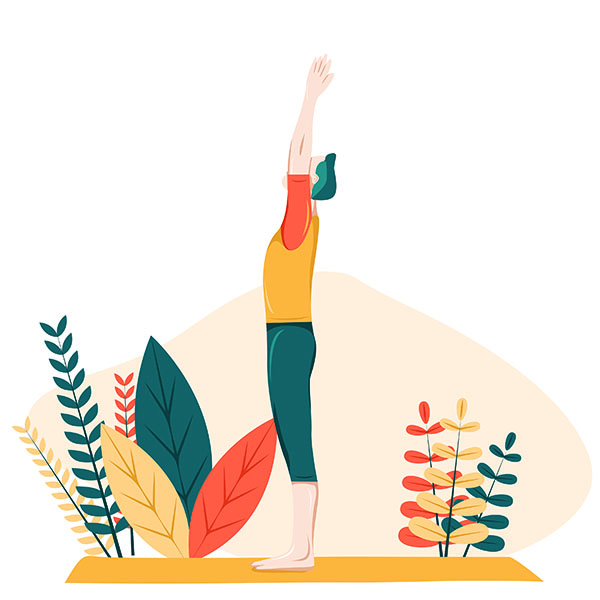A little background
A longtime Yoga devotee, I received my 200 hour teaching credential in 2018 as a student of Sienna Smith (a certified IAYT yoga therapist). Her teaching is influenced by Anusara yoga and the training emphasized alignment and safe practices. More recently, I finished a certificate in SATYA from Tias Little of Prajna Yoga. SATYA focuses on feeling and sensing what is happening internally during movement. Read more about SATYA here. In 2022 I have completed the coursework for a 500 hour teaching credential. This deeper dive into yoga included study of the subtle body, the nexus of Dharma and yoga, healing trauma and yoga anatomy.
Related to the physical body, my classes encourage improved mobility, strength and flexibility. In my non-yoga career, I work closely with senior citizens and the benefits of maintaining strong and healthy joints is apparent every time I go to work. Weak feet, ankles, knees and hips are often the starting points that lead to serious health problems. So, we work on that in class while also improving our internal senses of our body, namely balance and interoception.
Looking at the mental ‘body’, this is where the magic of Yoga really comes to life. During practice we bring our attention to the here and now through mindfulness techniques. ‘Notice your breath’, ‘do you feel any new sensation in your body’, ‘gaze softly to help keep your balance’… these are all things you will hear in my classes (and likely in any yoga class) and they are intended to help us gather our attention in the here and now. Taking a break from worrying about what’s to come or rehashing what has happened allows us some space to know who we really are, what really matters, and that, in the present moment, we are OK. These times of mindful awareness have spillover benefits after practice when we likely get lost in thoughts of the future or the past.
As a middle aged male, my yoga practice has become more nuanced over time and I don’t often do a vigorous vinyasa practice. I focus on alignment and sensing/feeling what’s happening in my body as I enter, hold and exit poses. After years of bad yoga habits and the ensuing injuries, I follow a practice that is regenerative, not depleting and that leaves me feeling buoyant and free.
What are my classes like?
I call my classes ‘Mindful Alignment Yoga‘, but what does that mean in practice? Well, in general, my classes start off with a mindful movement practice called SATYA , then we go into a sequence of Asana poses, and at the end, we wrap up with some Restorative postures.
SATYA where we bring our attention to what’s happening in our body as we go through gentle twists and bends. This practice is designed to calm the nervous system and bring our awareness into the present moment. It also attunes us to sensations in our body, such as, pulse, flushing, tingling, fascia tension, and more. This practice is supportive of our parasympathetic nervous system, our rest-and-digest system, and is well suited for people who are healing trauma.
The asana phase of class focuses on mobility and strength. We will do some gentle vinyasa flows, but mostly we will enter a pose and hold it for several breaths (if not longer). Holding poses allows us to finesse our alignment and position and then build strength in the muscles needed to hold the pose. Before exiting a pose, we take a couple of breaths to ‘live’ in the shape, just examine how it feels, where the effort is and where the ease can be found. It’s not quite yin yoga where poses are often held for several minutes, but it’s not quick pose shifts like power yoga or vinyasa yoga either.
Just before class ends we will enter a restorative pose. These poses are done sitting or lying down usually supported by props, such as, bolsters, blocks and straps. These poses allow our muscles and joints to settle after our asana sequence. These are no-strain, deeply relaxing postures where you will be invited to attune to your body’s internal sensations.
I also structure my classes as part of an ongoing series. For example, I recently formed my classes around the chakra model which created a 6 week arc of classes. The first class in the series focused on hips & pelvis, next week was abdomen/core, then chest and shoulders… and so on. Each class covers some new ground while connecting back to poses we have done in the recent past. There is certainly no need to attend all classes in a series, but there is some benefit to coming regularly.





[…] About James […]
[…] About James […]